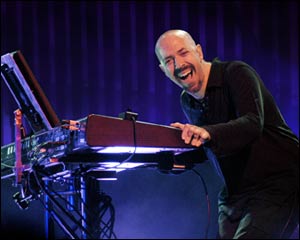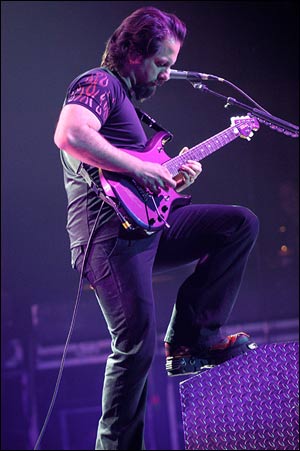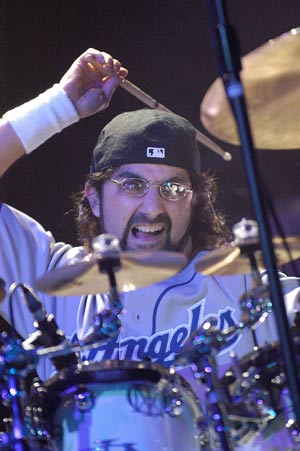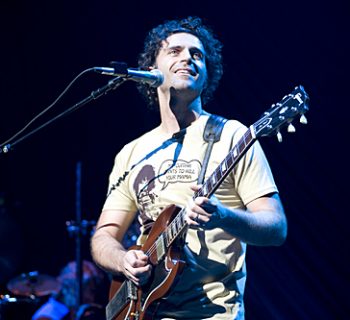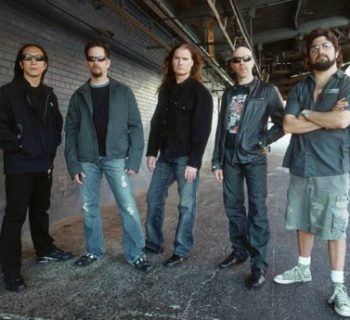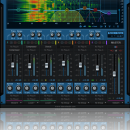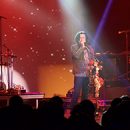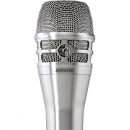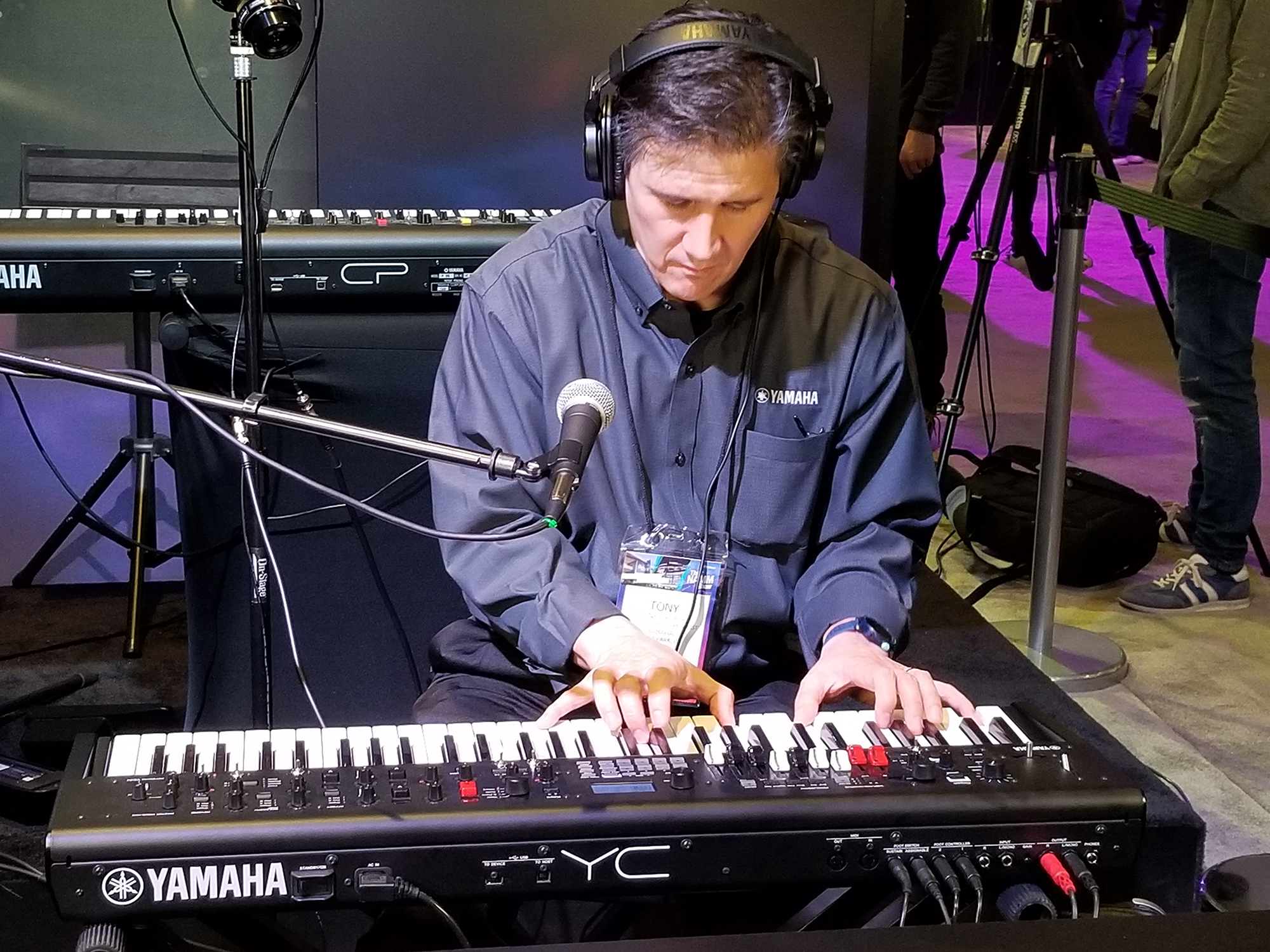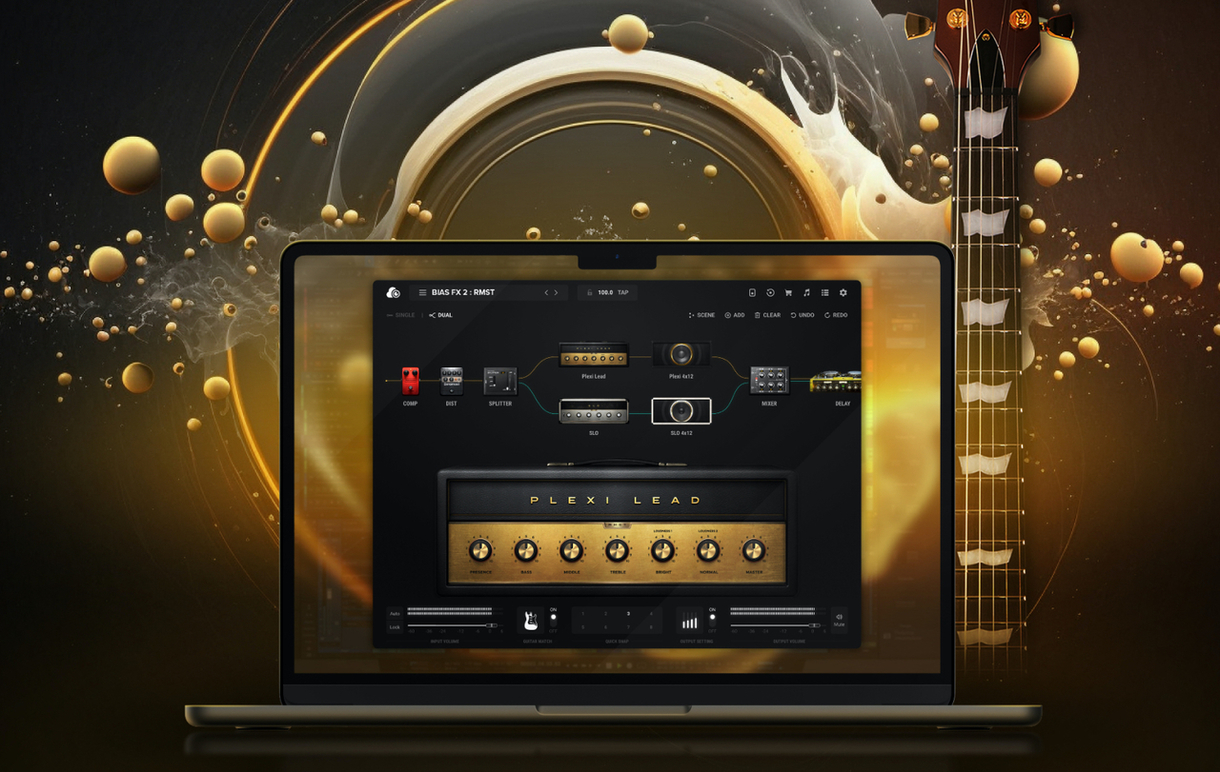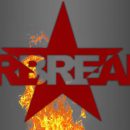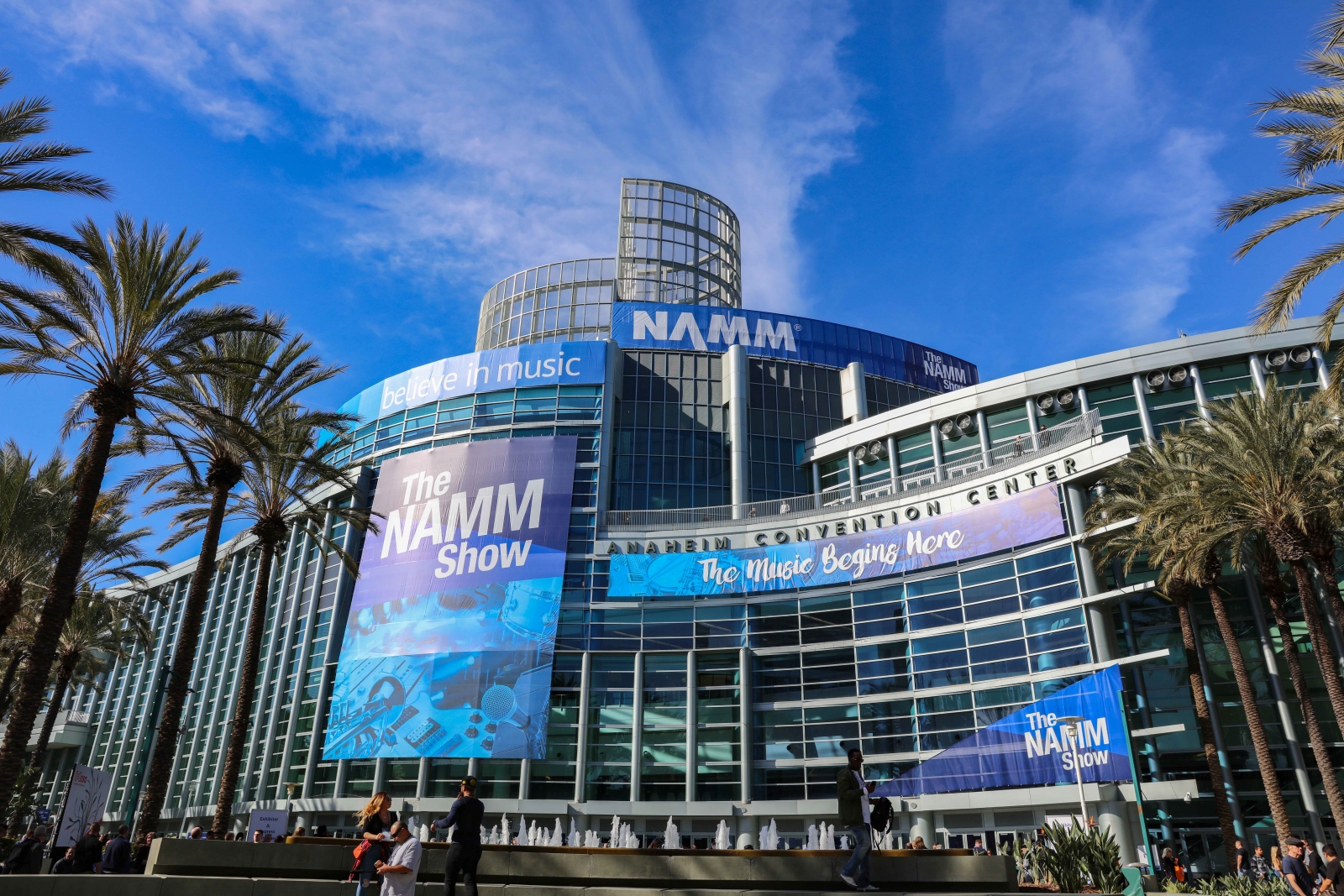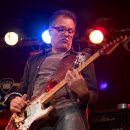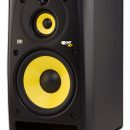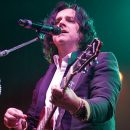Dream Theater are currently in the midst of their 20th Anniversary tour, supporting their recently released eighth studio album, Octavarium. On March 6, MusicPlayers.com had the opportunity to talk with keyboard wizard Jordan Rudess via telephone from his Phoenix, Arizona hotel room.
MPc: Listening to your playing on Scenes from a Memory, your first Dream Theater studio album and on the latest release, Octavarium, I hear a difference in your style of soloing. On Scenes, your style seemed more aggressive in a neo-classical way, almost analogous to the way many guitar shredders approached their solos in the 80s and early 90s. Your soloing seemed to have taken a cue more from guitar players than keyboardists.
On Octavarium, though, your style seems more reflective of a 70s progressive rock influence; especially on the title track “Octavarium.” Artists such as ELP, Styx, and Yes seem to have been running through your fingers during those recording sessions.
How do you feel your style of playing and soloing has evolved over the years with the band?
Jordan: Well, Scenes from a Memory was my first album with Dream Theater. It was a period of time when I was learning how to integrate what I do with the group. There was a lot of thought being put into it. “Ok, here I am as a musician, here is the group. How do we come together and really make this work?” I wouldn’t say there was as much freedom in my musical thinking in those days, although it certainly wasn’t constricted. It’s just that these days, we’re working as a team and everybody really knows each other so well that there’s a lot of creativity that can happen.
It’s a very flexible situation. On something like Octavarium, it’s all about Dream Theater going into the depths of what we can come up with as a group musically and doing that. It’s very different than Train of Thought, our previous album, which was very focused on a metal style. My leads – listen to those and most of them are really kind of rockin’. There’s a lot of a kind of feedback sound, grungy, whereas with Octavarium there’s really a mix. Something like the title track, where we intentionally wanted to create something that was kind of like our own prog epic… it really did tip the hat to all the groups that we’ve been loving over the last many years. Certainly for me, it was a meaningful task because going into my ELP, Genesis, Yes roots, that’s music I live and breathe.
I remember being in the studio and talking to Mike [Portnoy, drummer] about it and he first came up with that idea saying “lets create something that really has that whole prog thing” and he looked to me to make it so because I’m the one really besides him in the group who is really passionate about that kind of music, so it was a chance to go in there and make that kind of thing happen, which was so much fun.
When you developed that question, I’m sure you were thinking about that middle section which is very Wakeman-esque… extended synth solo with a classic synth sound.
MPc: Yeah, even your tone…
Jordan: The tone was very much in that kind of thing, a pure kind of waveform with a little bit of portamento. It definitely speaks and says “Ok, this is the classic synth sound.” As a matter of fact, it was recorded on a big synthesizers.com modular synthesizer.”
MPc: It almost seems that when you listen to and compare those two albums, on Scenes from a Memory, you were out to prove to the fans that you were a killer virtuosic soloist (which you are, of course), whereas on Octavarium, having already proven yourself, you now focus more on assuming a melodic role in the songs. Has your approach to lead playing change as a result of having less to prove or is it more to do with differences in the style of the songs?
Jordan: I think it’s more of what the group is about these days. We’re more relaxed and we’re just making the kind of music we want to make. We like pop things, we like stuff that’s not overly ridiculous progressive rock. We enjoy a lot of different kinds of music and don’t feel drawn to make music in any one particular direction. In reality, what ends up happening on any Dream Theater album is that there’s a little bit of what everybody expects because those are the sides that make up our group musically.
I think as we mature, as they say, we’re becoming a little bit more dedicated to making the music we want to make and doing it right, whether it’s something slow like “The Answer Lies Within” or something really crazy like “The dance of Eternity” We’re going to try to do the right thing by it. It might not have the virtuosic riff a certain type of listener wants to hear, just whatever works for what we thought was right for the music that we wanted to make, and you know, I think that’s my approach to playing – just try to find the right thing.
MPc: I’ve known you since back in the days of your being a product specialist at Korg USA (late 80s/early 90s). Considering your expert-level technical knowledge of synthesizers and keyboard workstations, how much tech work do you handle personally related to your keyboard/MIDI setup, or do you now rely on a keyboard tech to figure things out for you?
Jordan: I still program all of my own sounds for Dream Theater. Yesterday, I was just sitting here getting a few songs ready for the US tour and I needed to program them from scratch, so I just did it and I made the files. Basically, I’ll hand my tech a CD of the patches and he’s got the responsibility of backing things up and making sure that when I step on stage, they’re loaded.
I do stay in touch with the technical side of it. I try to remove myself from some of it though because it’s very time consuming and I like to focus on the music. The funny thing is… I was never a really technical person. The person that I am is a musical person who enjoys working with sound. I usually try to find a way to successfully achieve whatever sound is in my head. What that meant in the past was that I’d get a synthesizer and take however many hours I needed, or ask whoever I needed to ask, to really figure it out, and I usually ended up going deeper than most people, again not because I was technical, but because I was just so desiring to get a certain sound out of whatever hardware I was using, whether it was a Korg 01/W, Wavestation, Kurzweil 2600, or these days a Korg OASYS.
MPc: That leads perfectly into my next question! I read an interview in Korg USA’s Patches magazine that might lead someone to assume that you’ve replaced all of your keyboards with the OASYS. Is it possible that you’ve reduced your setup to a single keyboard?
Jordan: That’s pretty much what’s happening. I used to have six different sound sources on stage but was always focused on one main keyboard. On previous tours I was using a Kurzweil 2600, a Korg Karma keyboard, three K2600 racks, a [Korg] Triton rack, a lot of stuff, and that was my sound. I had decided that was already too complicated, so when the OASYS was coming out, it was a great time for me to make a transition. I figured that I can do most of what I’m doing, and in some ways more, on a Korg OASYS. It’s a powerful beast of an instrument.
For me it was a major transition because it wasn’t just about using another piece of equipment, but think about all the programming hours! I had thousands of hours invested in getting the entire Dream Theater repertoire programmed for my Kurzweil 2600s, so every song we play now has to be reprogrammed from scratch. In some ways it’s a pain, but in other ways it’s a pleasure. In the old days I would have to struggle every night on stage to fit into the RAM allocation of my instruments the samples that make the music happen. It was a dance I had to do every night, and now I don’t have to do that at all because the Korg just has so many sounds built into it that I’m not so reliant on bringing in sounds from the outside world. I can just sit there and load the entire Dream Theater collection into the OASYS and I’m ready to go.
So yes, I had to spend a ton more hours programming to get this thing going, but now that it’s done it’s a lot easier for me to understand what’s going on on stage. If something starts sounding wrong, my tech isn’t standing there thinking “which rack is it? Which MIDI channel?” If you hear a wrong sound you’re pretty sure it’s the OASYS.
The other thing that is a very big part of my show is an instrument called the Continuum. It’s a brand new instrument designed by Lippold Haken, and he developed what is kind of like a fretless keyboard. It’s something I’m really into and I’ve been working with him on the development of the instrument. It’s amazing – you have to check it out to totally understand what it is. It’s a touch surface set up so that you can slide your finger left to right to get to different pitches, but you can also go front to back to send any MIDI control message you want, and it also receives pressure, so you can slide from any note to any note or lift your finger and just play any note without sliding. It’s kind of like a violin for keyboardists. I have that hooked up to a Roland V-Synth that works amazingly well with it. The instrument can be used in many ways because it doesn’t make sound – it’s just a controller. But my thing with it these days is that I use it to make a pretty rockin’ lead tone.
And then I’m also playing a little bit of lap steel guitar, like on the beginning of the title track “Octavarium.” At the beginning of that track, there’s a pad, and then the first instrument that you hear kind of sliding in is the Continuum – not guitar – and then after that it switches mid-stream to the lap steel, and that’s me playing the lap steel guitar. Then the song kicks in and it’s this big melody with the lap steel introducing the melody of the song.
MPc: Do you do anything special for monitoring your keyboards on stage (dedicated keyboard amp) or do you rely on a general mix from the monitors?
Jordan: I rely on a mix from the monitor guy. I use Sensophonics in-ears – totally awesome. Actually, I just switched to them and am loving them.
MPc: On stage, do you use any MIDI foot controllers and effect pedals, or just standard piano damper/sustain pedals? How do you make use of the non-piano pedals?
Jordan: I use a very interesting pedal configuration. The most important pedal is a switch pedal that changes my setups from one to the next because when I walk on stage my entire night is set up incrementally. Combination 1 is the first sound and whatever combination I get to, number 203, is the last sound, so every time my sound changes I’m on that pedal, so it’s crucial that it be in the right place and not moving around.
Beyond that I use a sustain pedal and an expression pedal for fade-ins and wah-wah things. What’s interesting about my setup since I focus on one main keyboard, my keyboard is on a very cool rotating stand which was made for me by a builder in Holland by the name of Patrick Slaats. He’s been building stands for me for quite a while. He’s a real interesting guy, and he loves building stands. He’s built me some great stuff. What this means for me in terms of pedals is that when I turn around from position to position I want to be able to have those three pedals that I mentioned in all positions, so we have this complex wiring thing that my tech put together to be able to merge the pedals into one.
Oh, and I have a fourth pedal for this thing called the Music Pad. It’s kind of like an advanced cheat sheet. It’s a computer but it’s a pad on which I can put music notation files, I can write on it, I can leave written reminders. I have a pedal that increments the page for that so if I want to use it during a tune, I don’t have to touch anything and it goes to the next page (or you can touch either side of the screen to go to the next page).
MPc: Switching gears from stage to studio… How does a typical Dream Theater song get created? Do the songs start out with guitar parts from John, or do you bring demo ideas to him on piano, or do you guys sit down in a room and jam out ideas together?
Jordan: They start in every way that you mentioned! Sometimes John will bring in something, I’ll bring in something, or we’ll sit there in the studio and something emerges. Often it happens from either a guitar idea that John brought in, or a seed that I brought in, or some conceptual thing that Mike has, and then we’ll try to go for it from there. We try not to write too much on our own because we like to be together to decide what’s going to really suit the band, so usually if someone has something, they’ll come up with a seed and then bring it into the band and we’ll toss it around from there.
Sometimes, like on a song like “Octavarium”, I just go crazy and maybe bring in too many ideas, and sometimes we go with them as well. It all depends. You know, it’s fun. We use so many different techniques of composition that it’s a really flexible kind of thing. A lot of people always ask “well how do you write music?” and it’s different when I’m on my own creating music, where one of the options may be to work with my sequencer and record a few bars and start layering and creating textures. So my own composition work is different than with Dream Theater, where if I work on my own, I just try to record ideas onto a little cassette player or one of these little digital things and I’ll bring it in and have a series of twenty ideas and we’ll listen to them and go “oh, that’s cool” or “that’s really interesting – let’s work on that” and we just start hashing it out, jamming, playing, discussing things.
Sometimes someone will leave the room for a minute and I’ll take advantage of the quiet time and just come up with another few bars and when they come back in I say “what do you think of this?” You know, sometimes it’s hard to write music with a lot of noise going on, so if someone takes a break, you sit there and keep working on the next few bars.
MPc: At what point do vocals become integrated into the songs?
Jordan: The way we work is that vocals always come last. It’s not necessarily the way I would recommend for young people to think about things, but it works for Dream Theater. It’s a working formula and we really know how to do it. When I came into the band, that was their formula that I kind of fit into. You know, John and Mike, from a conceptual standpoint, really know how to do that. They’ve been doing that since the beginning of time, so pretty much the vocals will be fit into the music that we’ve created.
When it comes to creating the actual vocal lines, the melodic lines, very often within my keyboard parts there’s some indication of a melodic line. Then Mike and John will take that and create with James what he’s really going to sing. So they always fit the melodic line into what we’ve done musically, and then the words are written at the end.
MPc: Do you trigger any backing tracks or sampled vocal parts during live performance?
Jordan: No. The closest thing I’ll ever do to that is play the usual “oohs” and “ahhs” that come from a keyboard as part of my pad. We don’t have any actual backing tracks. We take a lot of pride in doing what we do live. Actually, the only time is if you hear us play “Spirit Carries On” – at the end, I hit a sample that’s actually Theresa Thomason singing the last phrase, but in general, what you’re hearing during a night of Dream Theater is the band playing. I take a lot of pride in orchestrating things to make it sound as close to the record as possible. Sometimes it’s a lot of advanced layers where the right hand is playing strings and brass and the left hand is playing some kind of timpani and chimes and maybe a piano sound with my thumb.
MPc: Does Dream Theater write out scores while composing using actual musical notation on staff paper, or do you just make simple chord charts and leave the details to individual memory?
Jordan: The only one who ever deals with any method of notation is me. I usually sit there with a notation book and I’ll write things out. It’s mostly for me. It helps me to look at things on paper, and sometimes if I’m writing a counterpoint thing it really also helps me to see it laid out so it’s easier to line things up and figure things out using that as a tool.
The other guys don’t really rely on that. John Myung has his own notation [laughing] that isn’t really related to standard notation. John Pettrucci can read music, he can write it, but he doesn’t deal with it at all times. It’s not a tool he uses when we’re writing – it would be too slow. But he’s got an amazing memory. Basically we can feed him millions of notes and he can spit them right back and remember them all. The only time my musical notation might help beyond compositional ideas is when I write something and the next day John asks “hey, what was that riff again?” and I’ll say “hey, let me pull out my book” and then I feel very good that I wrote it down.
But we always have a chart because our songs are sometimes very complicated as the parts go, so what we’ll do is we’ll create a flow of the different sections which we’ll label accordingly. We might call it “7:8 Metallica section into the Beatles section” – we usually give it a name that reminds us of something.
MPc: I tend to hear your keyboards falling into very specific sonic categories – acoustic piano, Moog-like synth leads, organ, and string section. There is a noticeable absence of sparkling, swirling synth tones and spacey sound that I’ve heard you utilize in other musical settings.
Jordan: Yeah [laughing], that’s because John’s guitar is so loud you’d never hear them.
MPc: After many years playing numerous synthesizers, is there one particular synth whose sound is your overall favorite (judging no other features of the keyboard), regardless of the style in which you play Dream Theater songs?
Jordan: That’s a tough one. You know the more technology marches on… I have a special connection with my Minimoog. That was the thing that really started it all for me. I can sit in front of a Minimoog and pull sounds out of it that I think are pretty special. It’s a very personal instrument for me.
In terms of having an electronic instrument that I have a personal relationship with, as far as the ability of getting whatever sound I want out of it, the OASYS is certainly that instrument because you can do more with it than anything else I’ve ever touched. I mean, I can’t go back and say “I love the Wavestation” because the Wavestation is inside the OASYS. I loved the Prophet VS before, and that’s inside the OASYS [it was the basis for the Wavestation]. You know there’s so much in it that it’s really my favorite thing to listen to these days.
We live in a world where there are so many instruments that are now software based and there are so many specialized instruments, and so many libraries! When I’m in the studio, for me it’s about using whatever tool is going to get me the sound that I really want, whether it’s on my computer or on one of my keyboards, and live it’s all about the OASYS because it can do everything, and it sounds amazing.
It’s an interesting question… I thought when the Roland V-Synth came out, that’s a really cool thing, that’s a great invention. It’s very different than everything else out there. It’s not a workstation; it just does some different things. So that was an instrument I looked at and went “wow”, kind of like when the Wavestation came out. That was another one that was different than the regular stuff.
MPc: Train of Thought had a much more straightforward metal sound with an obvious Metallica influence at times and a lot less-obvious keyboard playing overall. Do you and the band ever talk about producing a more mainstream rock album with radio-friendly material?
Jordan: We’re not going to do that because basically we’re in a position where we create the kind of music that we want whether it be like Train of Thought just because we want to create a classic metal style album, but we’re not in a position to try to go completely commercial now. It’s not interesting to us musically. I don’t think it would work. You know, I think people really look to us to be honest and have integrity and make the kind of music that we want. I think there’s always a couple of songs on our albums that, because of the kinds of music we like, they’re the kinds of things that if there was a record label really behind us, and the stars were aligned, they’re the kinds of things that could be on the radio that are more mainstream sounding. On every album, we’ve got something you can point to and go “oh, that’s catchy like a regular rock song.” They’re definitely not all in 7:8.
MPc: Can you tell us about some of your other projects outside of Dream Theater? I know you recently launched a magazine of your own.
Jordan: I work with a partner of mine, Dani Koesterich. Together we have an online conservatory and we have a magazine which we started called Accent. Online Conservatory is a growing place. I devised it because there were so many people asking me for lessons around the world, and of course with all my touring I really don’t have time to do that, but I wanted to get some messages across as far as keyboard playing, so the original intent was done many years ago to have an online resource for learning some of my approach to making music.
These days it’s come along way – I work with a company called Progressive Transcriptions – that helps me get a lot of things online as notation. There are hundreds of MIDI files, mp3s, videos, notation and text, and different levels, so say you’re an intermediate player going to the online conservatory, you can go there and choose “Harmony” and get to all these exercises.
Accent is a little more specialized, coming up with an online magazine format. I try to cover a lot of ground [we know what you mean]. I’ve got a guy doing some guitar-related things, someone’s doing drum stuff, like transcribing Dream Theater stuff and analyzing that, keyboard stuff, bass stuff… we finished our second magazine and we’re almost done with the third one. It moves on though because I’ve got a lot of really great guys working on it with me.
Beyond that, when I get home from the tour I’m getting ready to do my next solo album, which should be fun. I’m just finalizing my concept, which I’m not ready to announce yet because I’m not sure it’s going to go one way or the other. It’s my next album for Magna Carta records.

